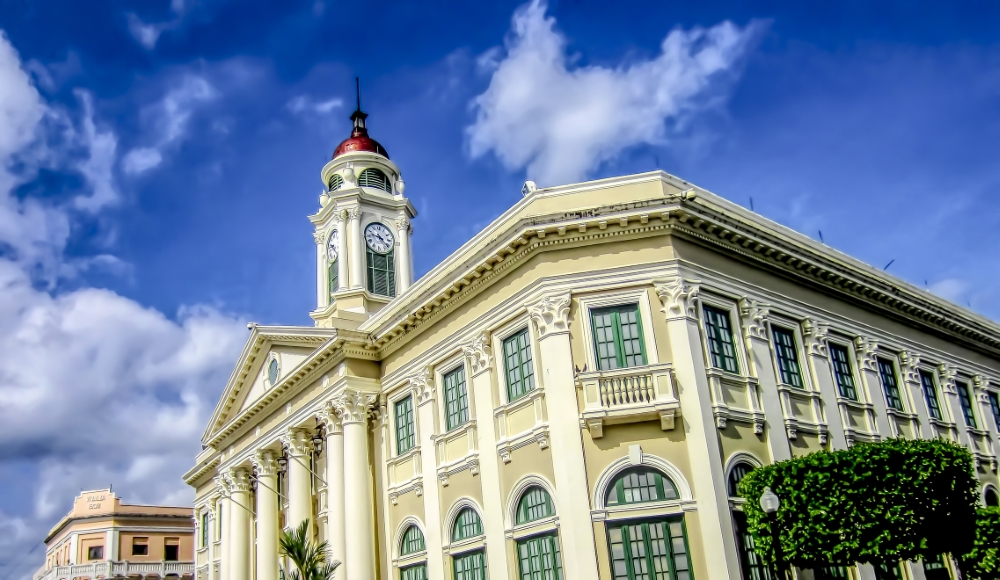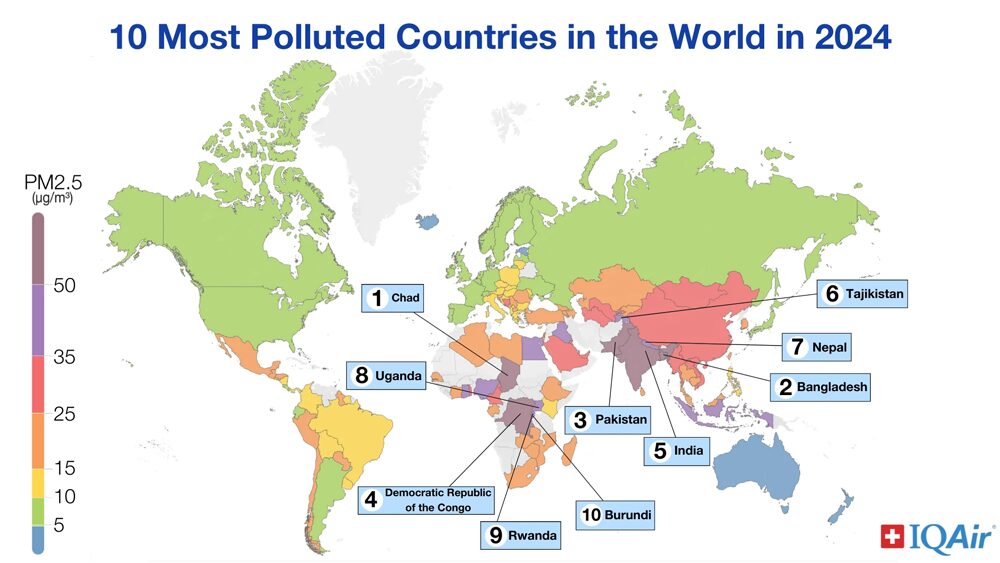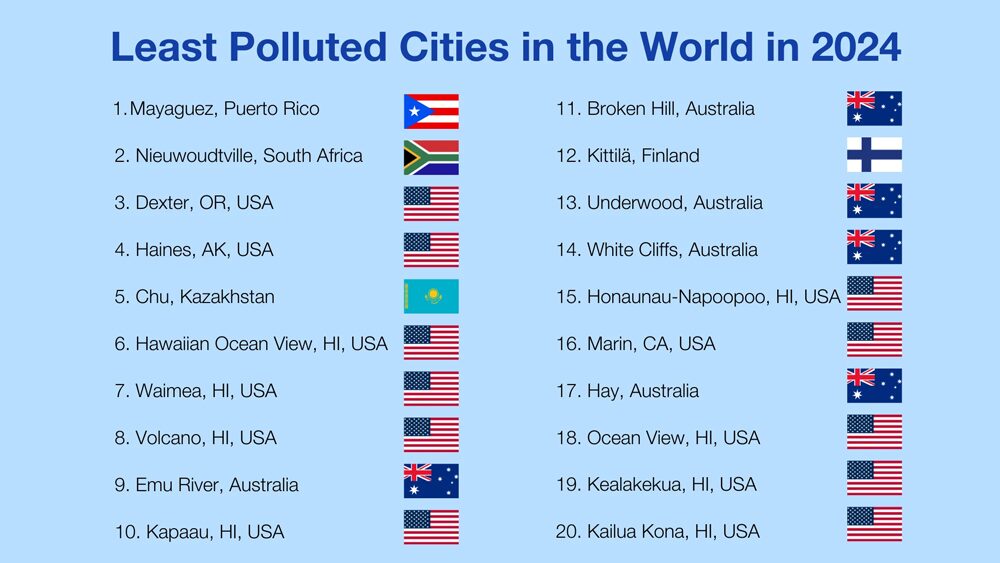

A new report says Mayaguez, Puerto Rico, has the cleanest air of any metro area in the world.
Photo by Dora Ramirez: Getty Images
Can you have meaningful industrial development in the least polluted places in the world? New air quality data allow us to provide at least a partial answer, even as the wind of change blows, as the Scorpions put it years ago, “like a storm wind that will ring the freedom bell.”
The new U.S. presidential administration’s team at the Environmental Protection Agency (EPA) took aim at a raft of its own regulations last week in an all-encompassing announcement designed to drive “a dagger straight into the heart of the climate change religion” (in the words of EPA Administrator Lee Zeldin). Among its targets: “Reconsideration of Particulate Matter National Ambient Air Quality Standards that shut down opportunities for American manufacturing and small businesses (PM 2.5 NAAQS).”
That’s the very standard by which the new 2024 World Air Quality Report from Switzerland-based IQAir ranks countries, regions and cities. The United Nations has declared access to healthy air is a universal human right, the report reminds us, noting that exposure to PM2.5 contributes to and exacerbates various health conditions, including asthma, cancer, stroke and lung diseases and that exposure to elevated levels of fine particles during pregnancy and early childhood are associated with a number of disorders, defects and cognitive impairments.
In February 2024, the U.S. Environmental Protection Agency (EPA) lowered the PM2.5 National Ambient Air Quality Standards (NAAQS) from 12.0 to 9.0 μg/m³ (micrograms per cubic meter). “The NAAQS are legally enforceable federal ambient air quality limits on pollution levels,” the IQAir report says. “The EPA expects that by 2032, this stricter standard could save up to $46 billion by preventing 800,000 asthma cases, 290,000 lost workdays and 4,500 premature deaths.”
The IQAir report relies on data from over 40,000 air quality monitoring stations across 8,954 locations in 138 countries. Among its findings:
Only 17% of global cities meet WHO air pollution guidelines. But seven countries met the WHO annual average PM2.5 guideline of 5 μg/m3: Australia, Bahamas, Barbados, Estonia, Grenada, Iceland, and New Zealand. Oceania is the world’s cleanest region, with 57% of regional cities meeting the WHO PM2.5 annual guideline value of 5 μg/m3.
Byrnihat, India was the most polluted metropolitan area of 2024, with an annual average PM2.5 concentration of 128.2 μg/m3. “The region of Central & South Asia was home to the top seven most polluted cities in the world,” IQAir reports. “India was home to six of the nine most polluted global cities.” Chad, Bangladesh, Pakistan, Democratic Republic of the Congo and India were the five most polluted countries.
Of the 138 ranked countries, the United States was No. 116 in air pollution terms, meaning it was the 23rd cleanest, just ahead of Denmark and Switzerland in terms of clear air but behind Costa Rica, Portugal and Canada.
“In 2024, the United States saw a significant reduction in PM2.5 levels, with the annual average dropping by more than 22%, from 9.1 μg/m³ in 2023 to 7.1 μg/m³ in 2024,” the report states. “Chicago and New York City both experienced more than 30% reductions in PM2.5 levels, while cities in Northern California and the Pacific Northwest, including San Jose, San Francisco, and Seattle, met the World Health Organization (WHO) annual PM2.5 guideline level. San Francisco, with an annual average of 4.2 μg/m³, recorded the lowest PM2.5 level seen in the past five years.
“In the Midwest, cities such as Columbus, Chicago, and Indianapolis experienced significant drops in PM2.5 levels, with reductions of 35-40%,” the report said. “However, Los Angeles had the highest PM2.5 annual average among the 25 most populated U.S. cities, at 10.1 μg/m³. Texas continues to face air quality challenges, with four of its cities ranking in the top 10 most polluted cities in the U.S. Southwestern cities like Phoenix and Las Vegas saw a rise in PM2.5 levels in 2024, with annual averages increasing by nearly 30%, reaching 7.4 μg/m³ and 6.3 μg/m³, respectively.” Various reasons are cited, including wildfire impact.

Map courtesy of IQAir
In North America, most of the most polluted regions are in Mexico. U.S. states and cities by and large are pretty clean compared to the rest of the world. Seattle, Washington, was deemed the cleanest major city in the U.S., while Mayaguez, Puerto Rico (fortified, like many top-ranking regions, by pollution-clearing breezes) was named the cleanest metropolitan area of 2024 in the entire world, with an annual average PM2.5 concentration of 1.1 μg/m3.
As documented in Site Selection’s annual rankings of free trade zones in November, FTZ No. 7 encompassing the Port of Mayaguez tied for No. 5 across all U.S. states and territories when evaluated by trade and production figures published in August in the 85th Annual Report of the Foreign-Trade Zones Board to Congress of the United States. Work began in October on a $200 million expansion at the port on the western coast of Puerto Rico.
Among the projects taking place in the zone’s subzones, Lilly del Caribe in February submitted a notification of proposed production activity at its plant in Carolina, located 125 miles away to the east of San Juan, to make orforglipron, a GLP-1 receptor agonist still in the trial phase that is will be used in an oral dosage weight-loss drug manufactured by Eli Lilly and Co., maker of the injection-delivered Zepbound. FDA approval is projected as soon as 2026.
San Juan, Puerto Rico, incidentally, is the second-cleanest regional capital city in the world after Nassau, Bahamas, says the IQAir report. The next cleanest are Papeete, French Polynesia; Bridgetown, Barbados; Reykjavik, Iceland; Canberra, Australia; and Wellington, New Zealand; followed by Tallinn, Estonia; Brasilia, Brazil; and Stockholm, Sweden. A few shades dirtier is Washington, D.C., with air slightly clearer than Luxembourg’s or London’s but hazier than Ottawa’s.
Here are the 20 metro areas with the least air pollution, according to the IQAir report:

Chart courtesy of IQAir
How many major corporate facility investment projects are landing in these clean-air regions? Not many. Since 2015, the Conway Projects Database has tracked all of 13 projects in just three of those 20 locations, led by eight in Marin County, California, whose project portfolio includes Moonbug Entertainment USA’s HQ in Fairfax, Biomarin Pharmaceutical investments in San Rafael and Novato, and Hulu’s office in Novato that has since closed when the streamer consolidated personnel in Seattle. Biomarin, founded in Novato, today employs around 3,000 people worldwide.
Kailua, Hawaii, meanwhile, has attracted a $6 million medicinals manufacturing facility from Cyanotech, a $1 million investment from Hawaii Cider Company and a $20 million investment by Portland, Oregon-based Craft Brew Alliance in a manufacturing plant. The third location among the clean-air elite to welcome investments is Mayaguez, which in 2023 landed a new 150-job call center and office from Citco Group (based in Cayman Islands) and a $2 million frozen dessert manufacturing facility from Cedó. — Adam Bruns

Map courtesy of IQAir
